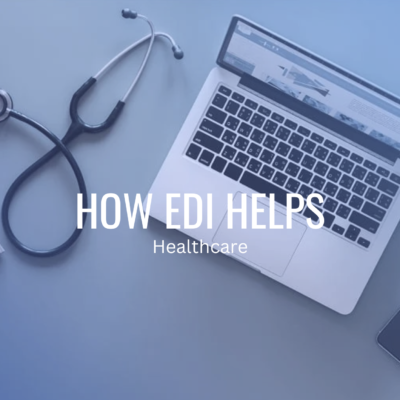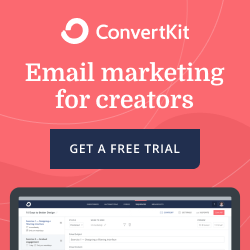
How to Build a Bot? Everything You Need to Know
Many people in the USA search on Google more than 1000 times a month to learn about building bots. This shows how much interest there is in bots these days.
Businesses today use bots in many ways, like getting leads or keeping users engaged. Bots are used in different industries.
They’re great for engaging with customers and can help boost sales and make money from social media accounts. But, how do you build a bot to get the most out of it? We’ll talk about that in this article.
But before we answer that, you should know why it’s worth investing in building a bot for your business. Let’s start with that.
Why Is It Crucial to Build a Bot For Your Business?
Bots have been around for a while, but recent advancements in artificial intelligence (AI) have given them new roles and abilities. Now, bots can be made to assist customers, keep them interested, and promote products.
With the growing trends in chatbots and their market stats, it’s important for businesses to adopt new ways of connecting with customers to boost their profits. Bots are expected to completely change how businesses interact with potential customers soon.
According to Global Market Insights, by 2024, the market size for chatbots is expected to reach $1.34 billion. This significant growth is driven by innovative technologies like machine learning and AI in the chatbot industry.
According to Gartner, businesses are expected to invest more in Artificial Intelligence (AI) than in any other technology over the next few years to enhance customer experiences. Around 47% of businesses plan to use chatbots for customer care, while 40% will utilize virtual assistants. It’s clear that AI is revolutionizing how businesses communicate with their clients, and bots are playing a crucial role in this transformation.
Besides the mentioned use cases, your business can benefit from bots because:
- They represent innovation and excitement for users.
- They can discover and connect with potential customers through the apps they use.
- A chatbot can provide customer support around the clock, 24/7.
- They can assist in delivering personalized ads.
- Bots can help nurture leads for your business.
- Social media monetization is possible through bots.
- Bots save time, allowing you to focus on developing new strategies.
Now that you understand why it’s crucial for your business to build a bot and how it can help you, let’s explore different types of bots and determine which one you should integrate into your business processes to streamline them.
5 Types of Bots That You Can Build For Your Business
Now that you’ve decided to build a bot for your business, it’s crucial to focus on creating one that maximizes benefits. To achieve this, carefully consider the problems you aim to solve and the functionalities you want to include in your bot.
Understanding the specific needs your application should address will determine the type of bot or virtual assistant you should build. This decision will impact both your development plan and the experience of your end-users.
Here are the main types of bots that businesses typically build to streamline their operations:
- Customer Service Bots: These bots interact with customers to address inquiries and resolve issues. They provide answers to frequently asked questions and assist with feedback and surveys.
- Marketing Bots: Marketing bots use internal and external data to provide advertisers with insights for building competitive marketing strategies, monitoring campaigns, and managing print, social, and digital platforms. They aid in lead generation, remarketing, and branding efforts.
- Sales Bots: Sales bots leverage artificial intelligence to offer sales teams data insights on targeted clients. They help businesses of all sizes move leads through their sales funnel more efficiently.
- Branding Bots: Similar to customer service bots, branding bots often initiate conversations. For example, Marvel Comics created the Spider-Man Bot to promote the Secret Empire book on Facebook and Twitter.
- Supply Chain Bots: These bots facilitate the smooth flow of materials from order to delivery. They are configured within various frameworks to ensure consistent connectivity and rapid data communication throughout the supply chain. Examples include Procurement Bots, Order Processing Bots, Distribution Bots, Shipping Bots, Inventory Bots, and Logistics Bots.
Bots use chat mediums such as SMS text, website chat windows, social media, or instant messaging platforms to respond to user messages. Choosing the right type of bot and platform for your business depends on various factors, including your business size, user base, and the purposes for which you are developing the bot.
Before diving into building a chatbot, make sure you understand the purpose it needs to serve. The success of your chatbot will heavily depend on its intended aim. Now that you’re clear on the information needed to build a bot, let’s explore the approach you should take when building one for your business.
How To Build a Bot – The Components Required
Creating a bot is simpler than you might think, but it’s essential to remember the three key elements of innovation: your bot must be viable, feasible, and, most importantly, desirable.
These benchmarks will help you answer questions like: Do your users want this? Should your business do it? Is it possible to achieve the results you want using a bot? Once you have answers to these questions, you can proceed with building the bot.
Unlike mobile applications, bots don’t necessarily require fancy UI designs, long development cycles based on app store reviews, or exclusive strategies to attract users. However, they still need essential software modules like a backend to support them.
In addition to the backend, several components are combined to create a bot that can revolutionize the customer experience offered by your business. If you’re an entrepreneur looking for a chatbot development company, you should examine their approaches before entrusting them with your bot project.
Here’s a breakdown of the necessary components for building a bot and how to approach building them:
- Backend: A robust backend manages messages from multiple channels and parses them with NLP services like Facebook’s Wit.ai, Watson Conversation, Api.ai, or LUIS.
- Channels: Endpoints are created in the backend for integration with specific channels, such as social media platforms, requiring access token approval.
- Conversational Intelligence: This phase involves training bots to provide natural, intelligent, and meaningful replies based on NLP entities and intents.
- Natural Language Processing (NLP): Integrate NLP services like Google’s Cloud Natural Language API, Microsoft’s Cognitive Service, IBM’s Watson Conversation, or Facebook’s Wit.ai to enable bots to understand and execute natural conversations with humans.
- Integration: Integrate the bot into existing mobile applications to execute procedures like purchasing products, booking appointments, and ordering items.
- Bot Control Panel: Develop a backend to track chatbot conversation history, clients, error logs, and add basic analytics metrics to assess the bot’s performance.
Now that we understand the components required to build a bot, we can answer the frequently asked question, “How to Build a Bot.” Next, we’ll explore the time and cost required to develop and integrate a bot into your existing app in the next section of our blog.
How Much Time and Cost It Requires To Build a Bot?
Now that we’ve covered market trends, the benefits of bots, popular bot types, and the components needed to create them, let’s discuss the time and cost involved in bot development.
First, let’s talk about time. If you’re planning to build an intelligent bot using Natural Language Understanding (NLU) services with a Bot Development Company working 8 hours a day, it will take approximately 3-4 months to complete. This estimated time includes designing, development, and integration of the bot into your application.
As for the approximate cost, it depends on the hourly rate of your developers. While it’s challenging to predict the exact cost in dollars, a rough estimate suggests it will range from $30,000 to $40,000.
If you still have questions or need clarification, feel free to reach out to us! We’re here to assist you.






